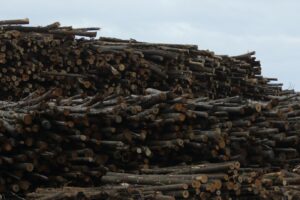The six fatal flaws of the Commission’s draft bioenergy proposals
A draft of the Commission’s review of the Renewable Energy Directive (RED) was leaked on 16 June. It does nothing to solve any of the serious climate and biodiversity threats posed by the EU’s bioenergy rules.
NGOs and scientists insist the final document (expected 14 July) go beyond greenwashing and tackle the issues that triggered the review in the first place.
The problems with bioenergy that the draft fails to tackle:
- Burning trees and crops for energy is bad for the climate: Burning wood emits more carbon dioxide than burning fossil fuels regardless of how sustainably it is sourced. Burning trees pollutes our environment instantly, but it takes decades for trees to grow back – time we don’t have if we’re to stop runaway climate change. And using land for dedicated biofuel or energy crops makes no sense in climate terms.
- It is bad for wildlife and soils: EU bioenergy rules provide a market for “low-grade wood” which would otherwise be left in the forest. This depletes nutrients, the ability of soils to store carbon, and destroys the homes of the creatures that live in older, rotten trees and downed wood. Some older natural forests have survived purely because they lack value for saw timber, now they are being obliterated for bioenergy and in some cases replaced with monoculture plantations.
- It is bad for health: Burning wood for energy is the largest source of the particulate matter pollution that kills hundreds of thousands of people in the EU each year.
A flawed draft that will change nothing:
- Flaw 1 – The draft allows Member States to continue supporting climate-damaging feedstocks, and so does nothing to discourage bioenergy that does more harm than good for the climate.
- Flaw 2 – The draft includes non-binding language that Member States should “avoid promoting” the use of “high quality stemwood” for energy. This will change nothing as the forest bioenergy industry mainly burns wood of low financial value, but high biodiversity and carbon value.
- Flaw 3 – The text introduces no-go areas for sourcing such as primary forest, highly diverse forest and peatlands. But very little biomass is taken from the 3% of remaining EU forests that are primary so this changes nothing as the remaining 97% is still open to sourcing.
- Flaw 4 – At present EU installations must apply “sustainability criteria” to wood sourced for power stations above 20 megawatts. The proposal lowers this requirement to power stations above 5 megawatts. It will change nothing as the criteria themselves are largely meaningless. They do not exclude feedstocks that the Commission’s own scientists say will increase emissions for decades, and are too weak to stop even the most egregious forms of forest destruction.
- Flaw 5 – The proposal does nothing to reduce the amount of wood being burned or the particulate air pollution it releases. The EU’s failure to address air pollution impacts was a key reason why the RED impact assessment was rejected by the Regulatory Scrutiny Board.
- Flaw 6 – The proposal includes no additional restrictions on the use of dedicated agricultural crops for biofuels and biogas. Moreover, it doesn’t fix the list of advanced biofuels and doesn’t strengthen the sustainability criteria for those biofuels.
Instead of properly greening renewable energy, the current proposal greenwashes it. On 14 July we need to see a new RED, but at present all we see is business-as-usual repackaged as change.
The EU must end support for burning trees and crops for energy.











